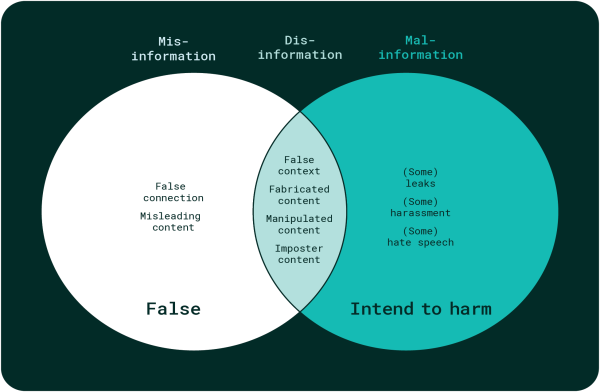What is misinformation?
You grew up with the internet. Chances are you are good at finding information online--maybe even better than your parents and your teachers.
Misinformation online can be hard to spot. The information on this page will help you to build your awareness and strengthen your skills when it comes to figuring out what's real and what's not.
Types of misinformation
There are three different kinds of misinformation[1](external link):

- Misinformation: Information that is false, but not created with the intention of causing harm.
- Disinformation: Information that is false and was created to harm a person, social group, organisation or country.
- Malinformation: Information that is based on reality, used to inflict harm on a person, organisation or country.
These kinds of misinformation can come to us in a lot of different ways. Not-for-profit organisation First Draft tells us to watch out for 7 different types of misinformation online.
To learn more about the impact of misinformation check out The Eggplant | The Special Report Special:
[1] See Council of Europe (2017) Information Disorder: Toward an interdisciplinary framework for research and policymaking (p.20). Strasbourg: Council of Europe. Available at: https://edoc.coe.int/en/media/7495-information-disorder-toward-an-interdisciplinary-framework-for-research-and-policy-making.html(external link) (accessed 21 May 2024).